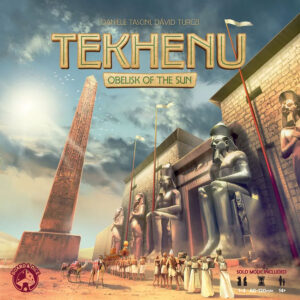 Over the past decade or so, Boards and Dice have published a number of games designed by Daniele Tascini and/or Dávid Turczi (sometimes together or with other co-designers). Most of which begin with the letter T—T’zolkin, Teotihuacan, Trismegistus, and this year Tekhenu and Tawantinsuyu.
Over the past decade or so, Boards and Dice have published a number of games designed by Daniele Tascini and/or Dávid Turczi (sometimes together or with other co-designers). Most of which begin with the letter T—T’zolkin, Teotihuacan, Trismegistus, and this year Tekhenu and Tawantinsuyu.
Honestly, the number of T-named medium to heavy euros have been both impressive and somewhat difficult to keep straight. Today we are digging into Tekhenu: Obelisk of the Sun, which is among the least heavy in the series.
Note: This review was written before Tascini’s racist comments were made public. There is no place for racism in board gaming and I strongly encourage all readers to read his original comments and his subsequent apologies and use that information as well when deciding if purchasing this game is for you.
Gameplay Overview:
To say that it’s the lightest of the series doesn’t make it light of course. So while the overview can’t get into all the rules, I’ll try to highlight the basics. In general, each turn you’ll draft a die from one of the six sections around the obelisk.
Dice colors—black, white, grey, yellow, and brown—generally correspond to one of the resources in the game. If you select a white die, you can use it to produce limestone, black can produce granite, etc… The grey dice don’t correspond to any resource at all.

This means, of course, you don’t have to spend your turn producing resources. Each section is also dedicated to a particular god and you can choose to take the god action corresponding to that section instead of producing. These actions are the key to scoring points throughout the game:
- Horus: Build a statue to honor the gods (giving you a bonus when another player takes that god action) or build a statue for the people (increasing your scoring for the quarries and workshops).
- Ra: Allows you to construct a pillar in the temple. You’ll score points for placing the pillar in a row or column with buildings and matching colors of adjacent pillars.
- Hathor: Allows you to construct a building around the temple, which will score points for any of your already built pillars in that row/column.
- Thoth: Allows you to take cards that will give you bonuses and additional endgame scoring. Most cards can only be chosen if your happiness reaches a certain level.
- Bastet: Allows you to increase your happiness and gives you scribes that can be used to modify dice values.
- Osiris: Constructs a building in the quarry or workshop that helps increase your production of the various resources.
All of that works within another constraint—based on the rotation of the Obelisk each die can be in the sun, shade, or darkness. Different colored dice can be considered pure, tainted, or forbidden depending on their position. Black dice, for example, are pure in darkness, tainted in shade, and forbidden in the sun. Forbidden dice can’t be chosen at all.
After each player has drafted two dice, the obelisk rotates, changing the status of the dice. After four turns, an intermediate maat phase occurs. Players will determine the value of the pure dice they’ve chosen compared to tainted dice. The goal is to stay as balanced as possible. Turn order will be reset with the player closest to a balanced value going first. If you happen to have more tainted value than pure you can also begin to lose points.
After two maat phases—8 player turns—a scoring phase occurs. Most of the points at this point come from having buildings, statues, and pillars in play. After the second scoring phase—16 turns—the game ends and the player with the most points is the winner.
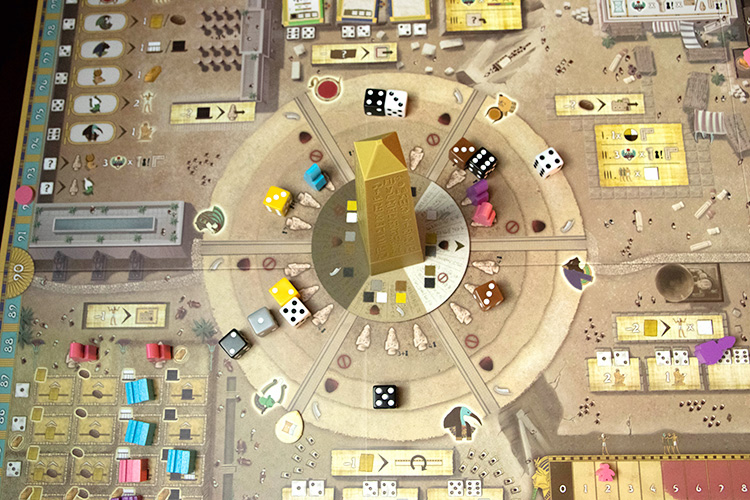
Game Experience:
This may just be my favorite of the T-named series of games. Mechanically it couldn’t be simpler. Take a die, produce or take the corresponding action. Strategically—it is a brain burner.
Almost everything you do in the game scores you points. Build a pillar, have some points. Construct a building, take these points. Gain some cards… eventually… points. But none of these things are free. Pillars cost granite and limestone. Buildings in the temple require bread. Cards are free—but only if you have happy people.

The production action isn’t quite as simple as I made it out to be. If you take a black die, you’ll get granite equal to its value. But your level of production for granite—which begins the game at 2—is the limit you can keep. So if you draft a 6-value die you’ll have to throw the other 4 granite away. And those extra resources count toward your tainted value during the next maat phase.
Building in the quarries and workshops allow you to increase your production for the various resources. This can make you way more efficient so you aren’t just throwing away half of what you make each turn.
But you can’t just focus fire on one particular plan. A friend of mine decided he was going to collect granite and then plan to make a bunch of statues. But by the time all the granite was collected, all of the available dice in the Ra section were either used or forbidden. Every time the obelisk rotates more dice are added, but only to the shaded areas. So you have to not only consider what you have the resources for but also what god actions are going to have available dice. It’s worth noting, you can spend two scribes to take a die from anywhere (even a forbidden one) and take any god action with it, so you always have some options if you get really stuck.

The best part of all that is very little is really left up to chance. Which dice are available and forbidden is clear to everyone. When the obelisk will rotate and which previously forbidden dice are not accessible is clear. Of course, some dice will be randomly added, but only to two of the sections so you have a pretty educated guess of what your options will be. The biggest unknown is what other players are going to take. That type of player interaction is my favorite in euro games. You never feel like you are playing in a silo, but your opponents can’t play randomly play a card you never see coming either.
This is one of the best dice drafting euros out there. Plenty of interconnected mechanisms, various scoring opportunities, and interaction amongst all the players. While there isn’t necessarily anything revolutionary, it’s a very approachable game that has a lot to really dig into. The biggest negative is really the obelisk itself. It looks cool on the table… maybe… but it blocks players from seeing which dice are available. I just took it off and everything was vastly improved.
Final Thoughts:
While I loved Teotihuacan, Tekhenu has definitely displaced it as my favorite here. It’s not lighter exactly, it’s just more accessible. The rules are more simple. And the various different actions seem more connected and allow for more interesting gameplay. Not to mention the added interaction with players having to potentially fight over the same available dice pool. If you are a fan of medium-to-heavy euro games, this belongs in your collection.
Final Score: 4.5 Stars – Exactly the type of euro games I want to exist. Lots of depth of strategy and plenty of different roads to victory.
 Hits:
Hits:
• Easy to pick up the mechanisms
• Lots of different scoring opportunities and the dice drafting makes it difficult to focus solely on one.
• Great interaction in drafting and battling for turn order.
Misses:
• Obelisk gets in the way. It’s annoying.








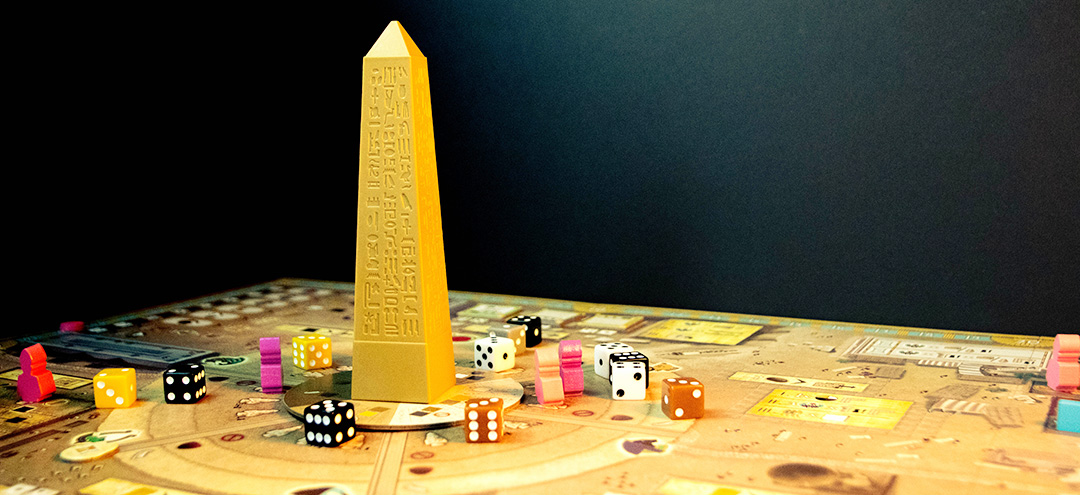

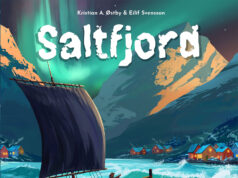
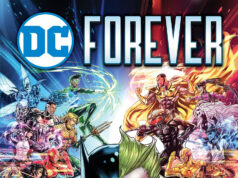












Not even mentioning the whole Daniele Tascini being an absolute pos while writing a glowing review in 2021, is incredibly poor on your part.
You are correct. This was written prior to the comments being made public. I’ve added a note to the introduction. For what its worth, I tossed my copy of this game in the trash after his first apology.
For anyone wanting to research the full scope of the comments, I think the threads on Twitter from Watch It Played are a good place to start.
The original comments:
https://twitter.com/WatchItPlayed/status/1350563723434463238?s=20
The second apology:
https://twitter.com/WatchItPlayed/status/1355161422225952770?s=20
I don’t think that’s good enough. The review may have been written before the comments were made, but it was published afterwards. Adding a boilerplate “note” is just lazy and really quite disrespectful towards your readers. You chose to publish a glowing 4.5/5 star review, rather than bothering to re-write it in the context of Tascini’s racist comments. Disappointing.
Ridiculous.
If it’s a good game, it’s a good game.
Asking a reviewer to not acknowledge this because of racist comments by the designer is insulting.
Don’t buy the game, if you wish, but don’t ask people to rate the game lower for it.
Get over yourself Andreas. Curb your demands.
He rated the game not Daniel being racist. I am sure you can’t know the character of every designer of the games you play. Tekhenu is a great game from what I hear but if you don’t want to support tascini don’t buy it. It’s sad that racism still exists in 2021
Agreed. Doesn’t change the rating of the game one jot. Should we all change ratings of a game because of something we subsequently learn of the designer’s behaviour? It’s nonsense. Besides, he has apologised for his comments. But for some that will never be enough in this day and age. But sad to hear the reviewer threw the game in the trash as though there is no place for forgiveness. Wasteful, and could have found a better home.
What about the poor co-designer? By throwing the game in the trash you just shat all over the Turczi also. Are you that shallow, or just that scared to not be called out next?
I reviewed the game favorably. I can do whatever the heck I want with the game after that. I don’t think David Turczi has a huge interest in whether I keep the game in my collection or not.
Its obvious that there is no winning in posting this review. People are both pissed off we had the AUDACITY to give the game a positive review and also OUTRAGED I got rid of the game based on Tascini’s racist statements.
So next time feel free to not comment.
Hear, hear. I agree that you should be reviewing the game not the designer. If there are no racist elements to the game then the game stands on its own. Whether you choose to support by buying or not is up to you. There are many more people involved in bringing a game to life than just the designer. Also agree that you can do whatever you want with the game afterwards.
Did you pay for it or did you got it for free from the publisher?
I bought this game on Saturday after WAITING TWO BLOODY YEARS for it to become locally available in South Africa! I could not give a damn about the designer making racist comments or what not. This is a fantastically good game! One that any euro lover should add to their collection.
I think Andrew wrote a fantastically written review and judges it fairly on what it offers the players! If you have a problem with the designer, go bark up his tree, write him a sternly worded letter, get a mob together and go burn a cross on his lawn to show your displeasure at his opinions, BUT LEAVE THE DAMN GAME OUT OF YOUR JUDGEMENTAL SJW BULLCRAP!